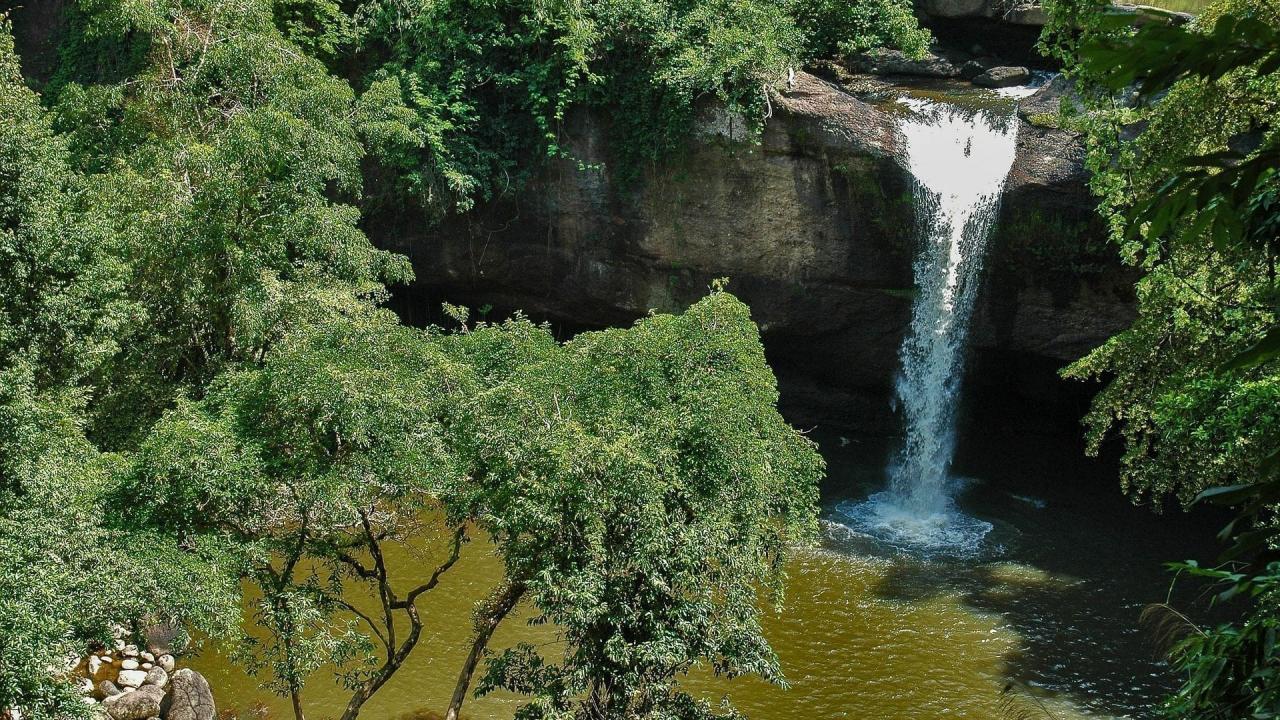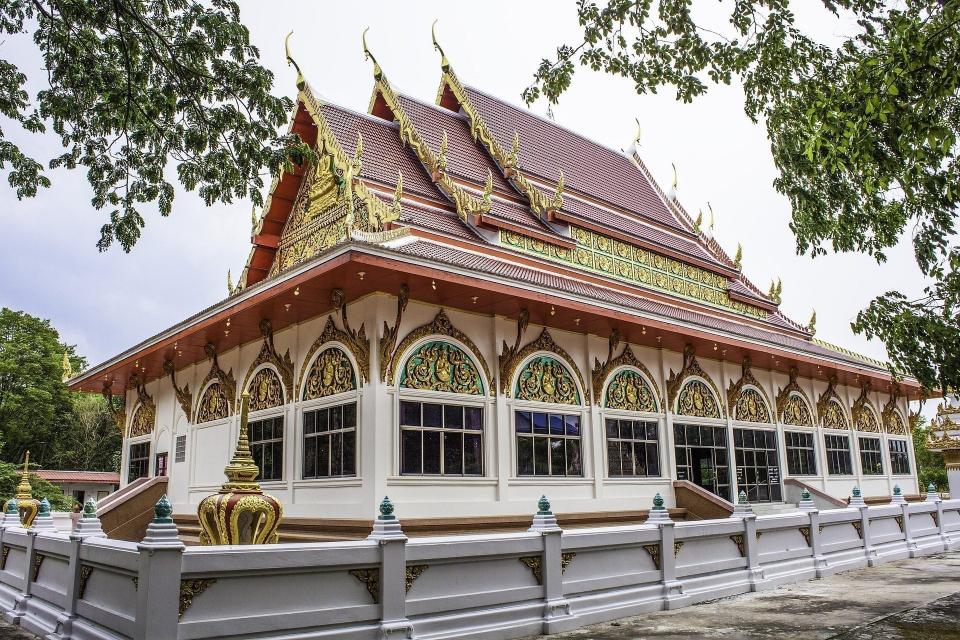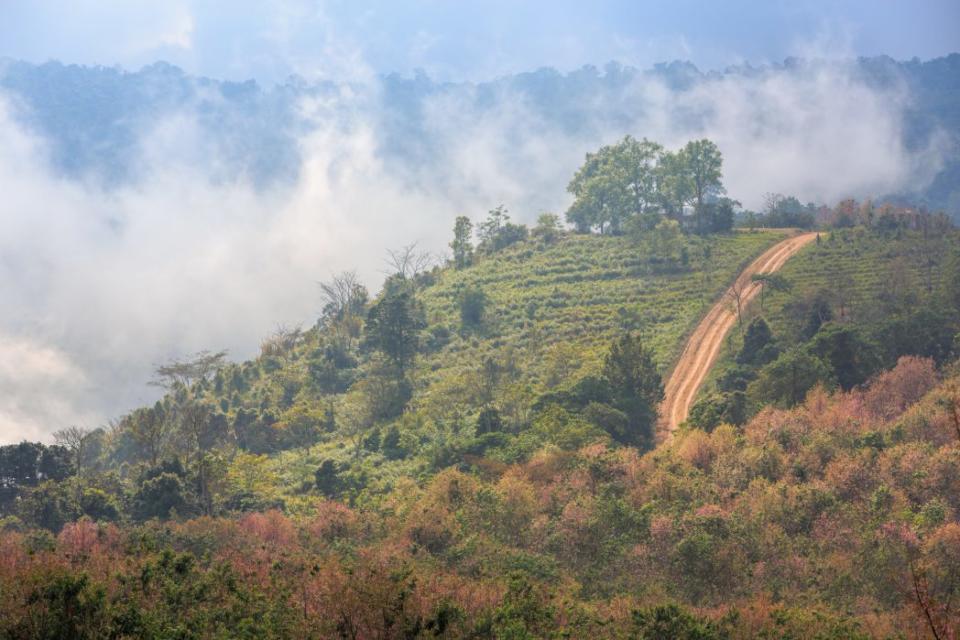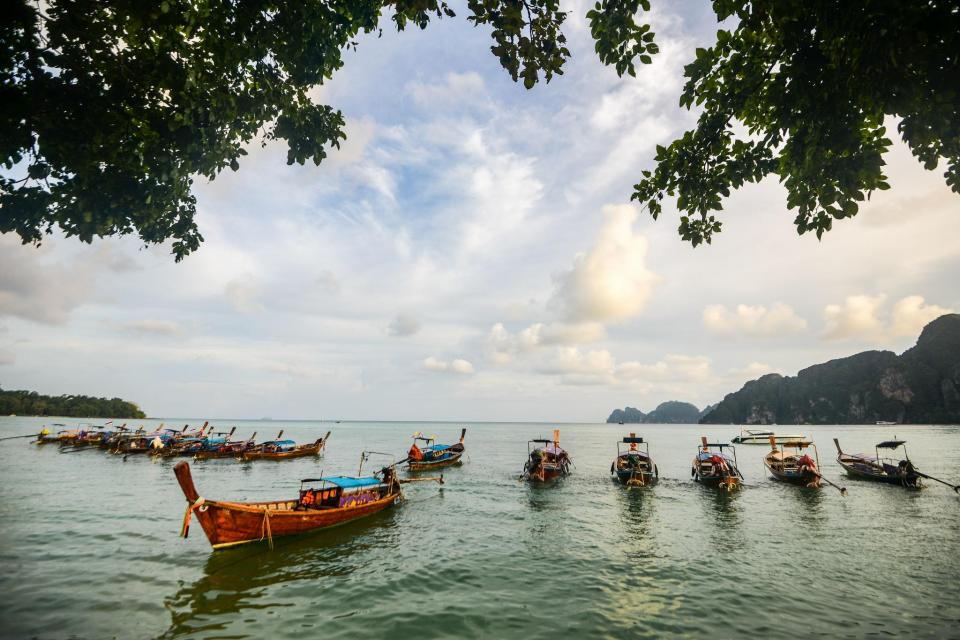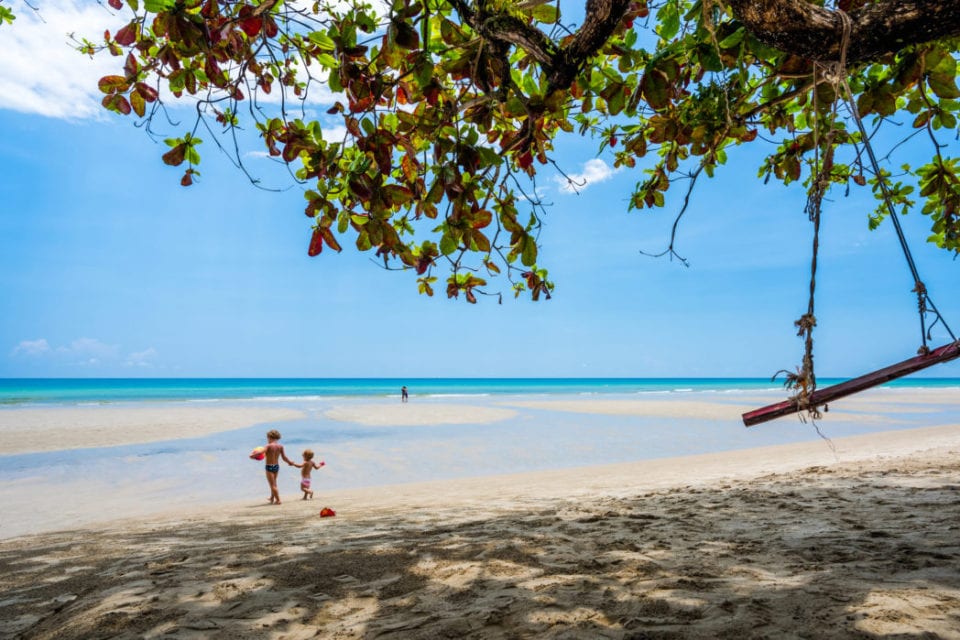Khao Yai
Located in the Nakhon Ratchasima Province, Khao Yai is the third largest National Park of Thailand. Within its 2000 km2 space, a diverse fauna and flora are grouped together.
Many treks will allow travellers to admire different waterfalls, colorful birds and other jungle animals.In 2005 it was designated a UNESCO World Heritage Site as part of the larger Dong Phaya Yen–Khao Yai Forest Complex. Situated on the southwestern boundary of the Khorat Plateau, it occupies the western part of the Sankamphaeng Mountain range. Thick jungle covers the mountainous slopes, interspersed with some scenic waterfalls.
More than 80 percent of the park is forested. Vegetation types include tropical rainforest, dry evergreen forest, hill evergreen forest, mixed deciduous forest, dry dipterocarp forest, and grassland. The rich diversity of plants (about 2,000 species) astound the new-comer. Towering trees draped in mosses, climbers and epiphytes, tangled trunks of the strangling figs, drooping lianas and spiny rattan palms, delicate ferns, multicoloured lichens and an ever-changing array of fungi.
Khao Yai’s forests are teeming with wildlife. Wildlife is plentiful (46 mammal species, at least 74 species of herptile and thousands of invertebrates) but often hard to see. Gibbons provide an excellent morning wake-up call with their mournful hoots. Quiet, patient walkers may catch a glimpse of these tree-living apes. Pig tailed macaques are often seen on the roadsides. Civets, squirrels, porcupines, and wild pigs add a bit of variety. Snakes and lizards usually make their presence known by a rustle in the undergrowth as you are walking.
Over bird 320 species have been recorded. To the non-expert, birds are often just mysterious whistles, trills and calls, or a flutter of wings and a glimpse of colour. Patience is needed, good binoculars and a bird guide. Roadsides, the old golf course, grasslands and the watching towers are good places to start . Hornbills are quite easy to spot, and hear the “gak gak gak” laugh of the Indian Pied (often seen in big flocks near Nong Pak Chi Tower in the evenings), or the deep resonant “gok…gok” of the Great Hornbill (usually seen in pairs or alone, the biggest of Khao Yai’s hornbills). Siamese fire-back and silver pheasants are frequently seen in the forest.



